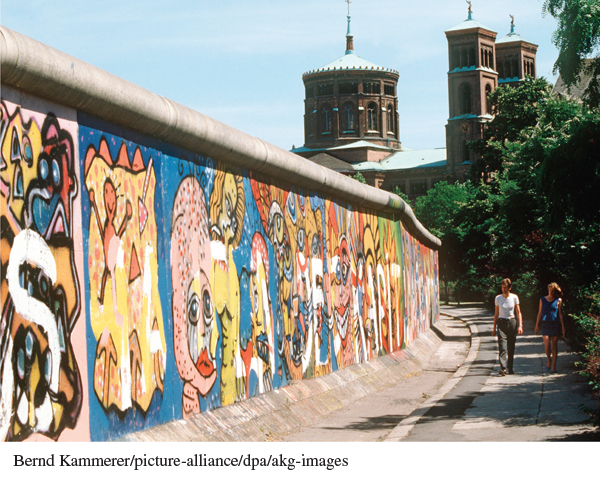Introduction for Chapter 29
980
29
Challenging the Postwar Order
1960–1991
As Europe entered the 1960s, the political and social systems forged in the postwar era appeared sound. Centrist politicians in western Europe agreed that managed economic expansion, abundant jobs, and state-
By the late 1960s, however, this hard-
In the East Bloc, leaders vacillated between central economic control and liberalization and left in place tight controls on social freedom, leading to stagnation and frustration. In the 1980s popular dissident movements emerged in Poland and other satellite states, and efforts to reform the Communist system in the Soviet Union from the top down snowballed out of control. In 1989, as revolutions swept away Communist rule throughout the entire Soviet bloc, the Cold War reached a dramatic conclusion.

981
CHAPTER PREVIEW
Reform and Protest in the 1960s
Why did the postwar consensus of the 1950s break down?
Crisis and Change in Western Europe
What were the consequences of economic decline in the 1970s?
The Decline of “Developed Socialism”
What led to the decline of Soviet power in the East Bloc?
The Revolutions of 1989
Why did revolution sweep through the East Bloc in 1989, and what were the immediate consequences?
Chronology
| 1961 | Building of Berlin Wall suggests permanence of the East Bloc |
| 1962–1965 | Second Vatican Council |
| 1963 | Wolf publishes Divided Heaven; Friedan publishes The Feminine Mystique |
| 1964 | Civil Rights Act in the United States |
| 1964–1973 | Peak of U.S. involvement in Vietnam War |
| 1966 | Formation of National Organization for Women (NOW) |
| 1968 | Soviet invasion of Czechoslovakia; “May Events” protests in France |
| 1971 | Founding of Greenpeace |
| 1973 | OPEC oil embargo |
| 1975 | Helsinki Accords |
| 1979 | Margaret Thatcher becomes British prime minister; founding of West German Green Party; Soviet invasion of Afghanistan |
| 1985 | Mikhail Gorbachev named Soviet premier |
| 1987 | United States and Soviet Union sign arms reduction treaty |
| 1989 | Soviet withdrawal from Afghanistan |
| 1989–1991 | Fall of communism in eastern Europe |
| December 1991 | Dissolution of the Soviet Union |